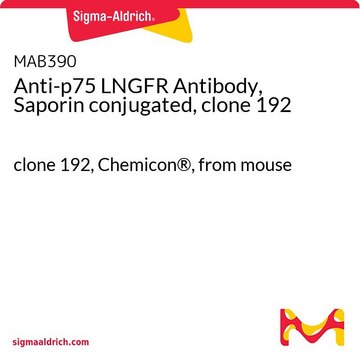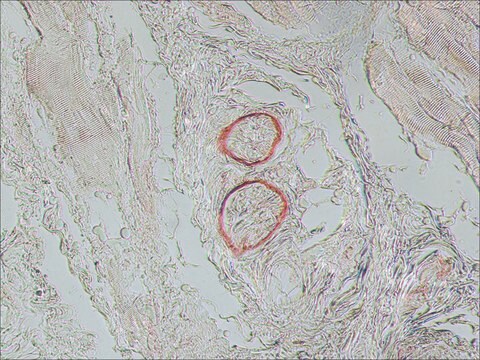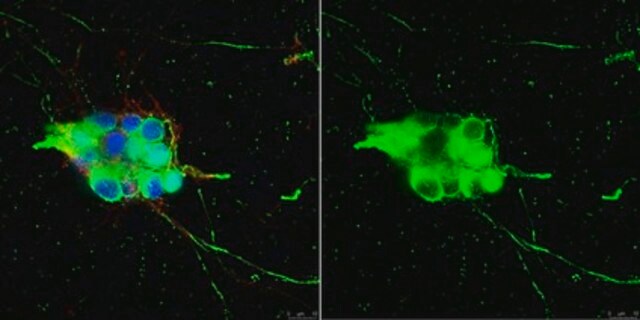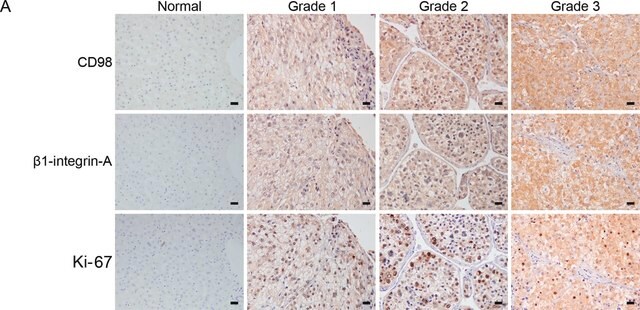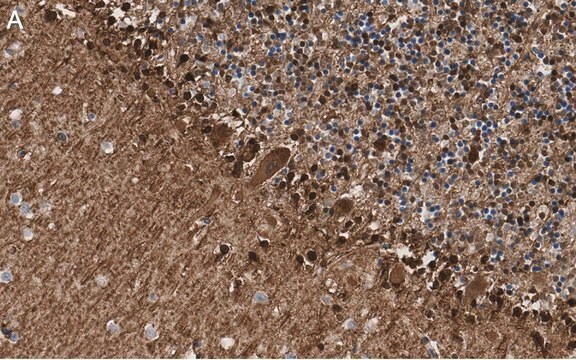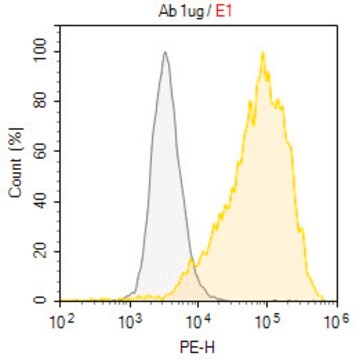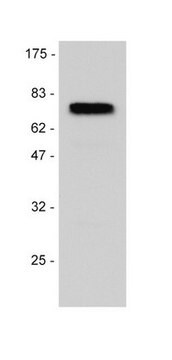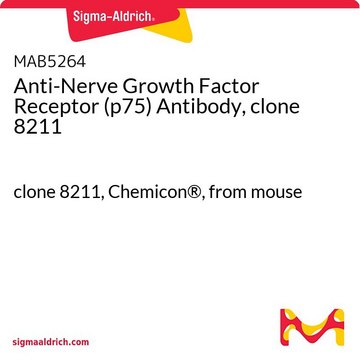MAB365
Anti-Nerve Growth Factor Receptor Antibody, extracellular, clone 192-IgG
clone 192-IgG, Chemicon®, from mouse
Synonym(s):
CD271 antigen, Low affinity neurotrophin receptor p75NTR, Low-affinity nerve growth factor receptor, NGF receptor, low affinity nerve growth factor receptor, nerve growth factor receptor, nerve growth factor receptor (TNFR superfamily, member 16), p75 IC
About This Item
Recommended Products
biological source
mouse
Quality Level
antibody form
purified antibody
antibody product type
primary antibodies
clone
192-IgG, monoclonal
species reactivity
rat
manufacturer/tradename
Chemicon®
technique(s)
immunocytochemistry: suitable
immunohistochemistry: suitable
immunoprecipitation (IP): suitable
western blot: suitable
isotype
IgG1
NCBI accession no.
UniProt accession no.
shipped in
wet ice
target post-translational modification
unmodified
Gene Information
human ... NGFR(4804)
General description
Specificity
Immunogen
Application
Neuroscience
Neurochemistry & Neurotrophins
1-5 µg/mL (Non-reducing conditions only) was used on a previous lot.
Inhitibition Assay:
Inhibition on NGF binding {Chandler, 1984}.
Immunoprecipitation:
5 µg/mL, 0.5% triton X-100 buffer; PC12 positive control was used on a previous lot.
Immunohistochemistry:
1-5 µg/mL on rat spinal chord, of a previous lot was used. Other fixatives and methods can also be used.
Quality
1-5 µg/mL on rat , of a previous lot, (spinal chord, see protocol below); other fixatives and methods can also be used.
Target description
Linkage
Physical form
Storage and Stability
Analysis Note
Western Blot: NGF-differentiated PC12 cell lysate.
Immunohistochemistry: Rat brain tissue.
Other Notes
Legal Information
Disclaimer
Not finding the right product?
Try our Product Selector Tool.
Storage Class Code
10 - Combustible liquids
WGK
WGK 2
Certificates of Analysis (COA)
Search for Certificates of Analysis (COA) by entering the products Lot/Batch Number. Lot and Batch Numbers can be found on a product’s label following the words ‘Lot’ or ‘Batch’.
Already Own This Product?
Find documentation for the products that you have recently purchased in the Document Library.
Our team of scientists has experience in all areas of research including Life Science, Material Science, Chemical Synthesis, Chromatography, Analytical and many others.
Contact Technical Service